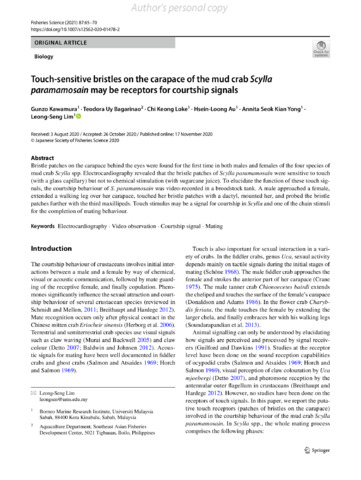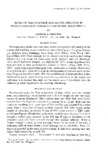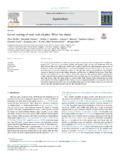Touch-sensitive bristles on the carapace of the mud crab Scylla paramamosain may be receptors for courtship signals
Share
Abstract
Bristle patches on the carapace behind the eyes were found for the first time in both males and females of the four species of mud crab Scylla spp. Electrocardiography revealed that the bristle patches of Scylla paramamosain were sensitive to touch (with a glass capillary) but not to chemical stimulation (with sugarcane juice). To elucidate the function of these touch signals, the courtship behaviour of S. paramamosain was video-recorded in a broodstock tank. A male approached a female, extended a walking leg over her carapace, touched her bristle patches with a dactyl, mounted her, and probed the bristle patches further with the third maxillipeds. Touch stimulus may be a signal for courtship in Scylla and one of the chain stimuli for the completion of mating behaviour.
Suggested Citation
Kawamura, G., Bagarinao, T., Loke, C. K., Au, H.-L., Yong, A. S. K., & Lim, L.-S. (2021). Touch-sensitive bristles on the carapace of the mud crab Scylla paramamosain may be receptors for courtship signals. Fisheries Science , 87(1), 65-70. https://doi.org/10.1007/s12562-020-01478-2
Subject
Collections
- AQD Journal Articles [1248]
Related items
Showing items related by title, author, creator and subject.
-
Expressions of molt-inhibiting hormone (MIH) and extracellular signal-regulated kinase (ERK) during the molting stages of the giant mud crab, Scylla serrata
Perez, Karen Camille; Huervana, Joana Joy; Eguia, Maria Rowena; Ablan-Lagman, Ma. Carmen (De La Salle University, 2017)Survival and growth of mud crabs and any other crustaceans depend on molting. Molting is influenced by several hormones, two of which are Molt-Inhibiting Hormone {MIH} and a molt promoting hormone, the Extracellular ... -
Notes on the courtship and mating behavior in Penaeus monodon Fabricius (Decapoda, Natantia)
Primavera, Jurgenne (Brill Academic Publishers, 1979)Courtship and mating behavior in the sugpo or giant tiger prawn, Penaeus monodon Fabricius, are described. These are divided into three phases: parallel swimming of male and female; male turns ventral side up to female; ... -
Larval rearing of mud crab (Scylla): What lies ahead
Waiho, Khor; Fazhan, Hanafiah; Quinitio, Emilia T.; Baylon, Juliana C.; Fujaya, Yushinta; Azmie, Ghazali; Wu, Qingyang; Shi, Xi; Ikhwanuddin, Mhd; Ma, Hongyu (Elsevier, 2018)The increasing global demand for mud crabs (genus Scylla) and threats to the wild populations highlight the urgency of fully rearing them in captivity. Despite considerable progress in mud crab production, most crab farms ...




